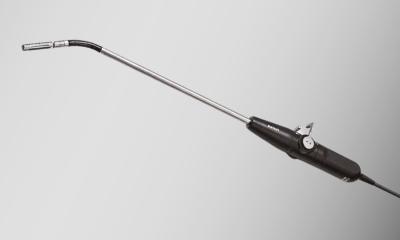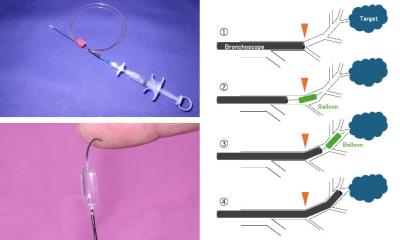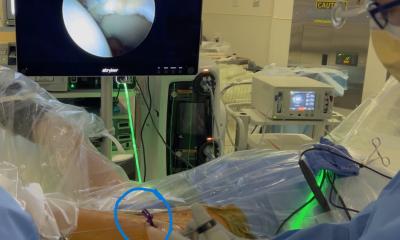Minimally-invasive hip surgery benefits patients
According to the WHO, some 3 million people across the world require artificial hips as primary joint replacement surgery. Increasingly, surgeons are using minimally-invasive procedures to implant artificial hips, with direct anterior access. It is an ideal extension to the conventional method as the deployment of these procedures for suitable patients, usually results in a significant shortening of the early rehabilitation phase.
"With minimally-invasive methods with anterior access, we only need to make an incision of 8 to 10 centimetres compared to the 20 centimetres needed with a conventional approach. What is really important however is that less muscle tissue has to be displaced, which helps to preserve and protect muscle function. This means less discomfort for the patient and shorter recovery times," reports Professor Dr. Hartmuth Kiefer, Medical Director of the Lukas Hospital in Bünde, Germany.
MIS HIP device significantly simplifies minimally-invasive procedures
A pre-requirement for ensuring the best access to the surgical field is the free movement of the leg during the operation. As the pure muscle-power of the care staff is not enough to provide sufficient movement in many cases, MAQUET has developed an extension device specifically to meet these requirements, which is connected to the traction bar interface on the surface of the operating table. The MIS extension device allows the simultaneous extension, rotation, lowering and adduction of the leg.
A carbon fibre bar with open connection links makes it possible to move the device both vertically and laterally. The release for the vertical height adjustment is located at the back end of the support. Using the carbon fibre support, the extension device is adapted to the length of the patient's leg. A separate skid slides on the carbon fibre support to facilitate this adjustment. The foot holder can be turned through 360° and can be locked in the required position. The foot holder is equipped with a quick-change attachment. This enables the surgeon or the OR team to reposition the leg during the operation. So that resistance is experienced when dislocating the proximal femur, the support rollers can optionally be mounted laterally. Using the pelvic table top, the patient's pelvis can also be accessed from the side. The advantage: Repositioning is not needed.
The pelvis can be x-rayed at any time as the pelvic table top is made of carbon fibre. Operation of the extension device by the care staff is intuitive and storage space requirements are kept to a minimum as it is designed to fold away when not in use. It can be used with implants of any make.
10.06.2009





